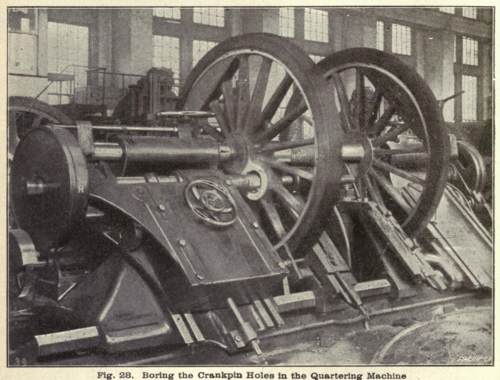Quartering
Jump to navigation
Jump to search

Quartering is the setting of the wheels of a two or four cylinder locomotive to ensure that the crankpins on one side are at 90° to those on the other, in order to ensure self-starting.

Boring Crankpin Holes in the Quartering Machine. From "Locomotive Building"
Methods
Dave Sclavi's quartering jig.
<videoflash>q0smMBVb-Fs</videoflash>
Leading Side
From Trains.com:
- Most railroads had the right side crank pins leading the left. In other words, when the right rods were at their lowest point (the "bottom quarter") the left side was on front dead center. The Pennsylvania was the biggest user of left-hand lead locomotives. Someone theorized that it was because PRR had so much multiple-track territory; the most solid part of a multiple-track roadbed is toward the center, and since the side of a locomotive that has the lead is the side that pounds the track hardest, PRR wanted the locomotive to pound the most solid part of the roadbed - the left hand side.